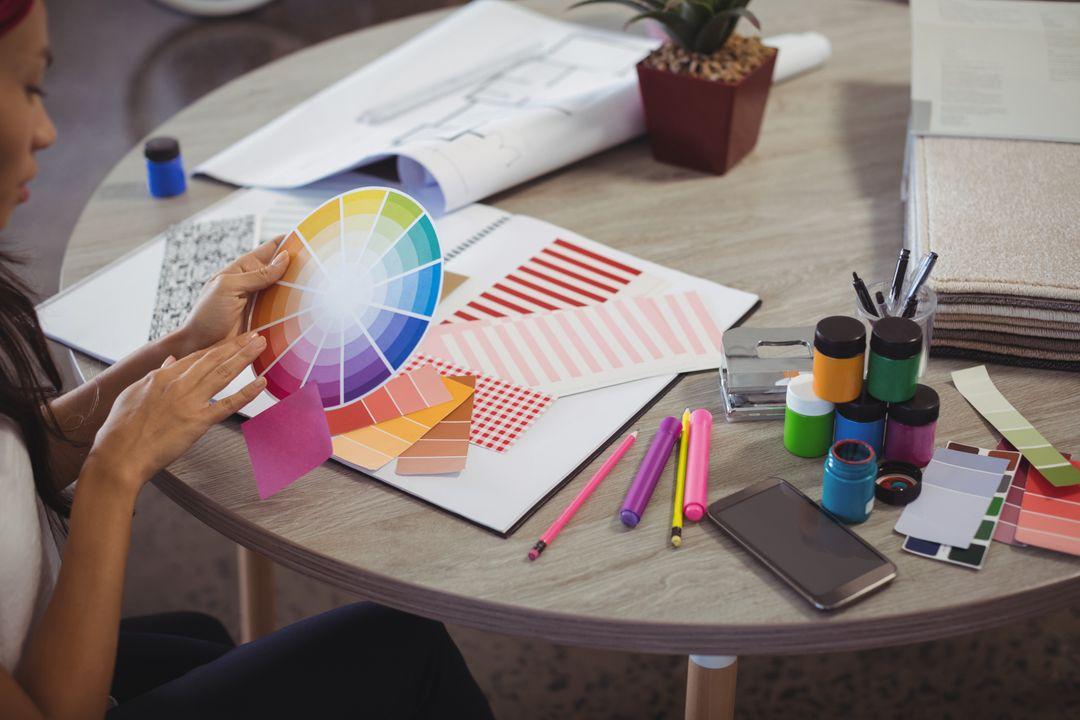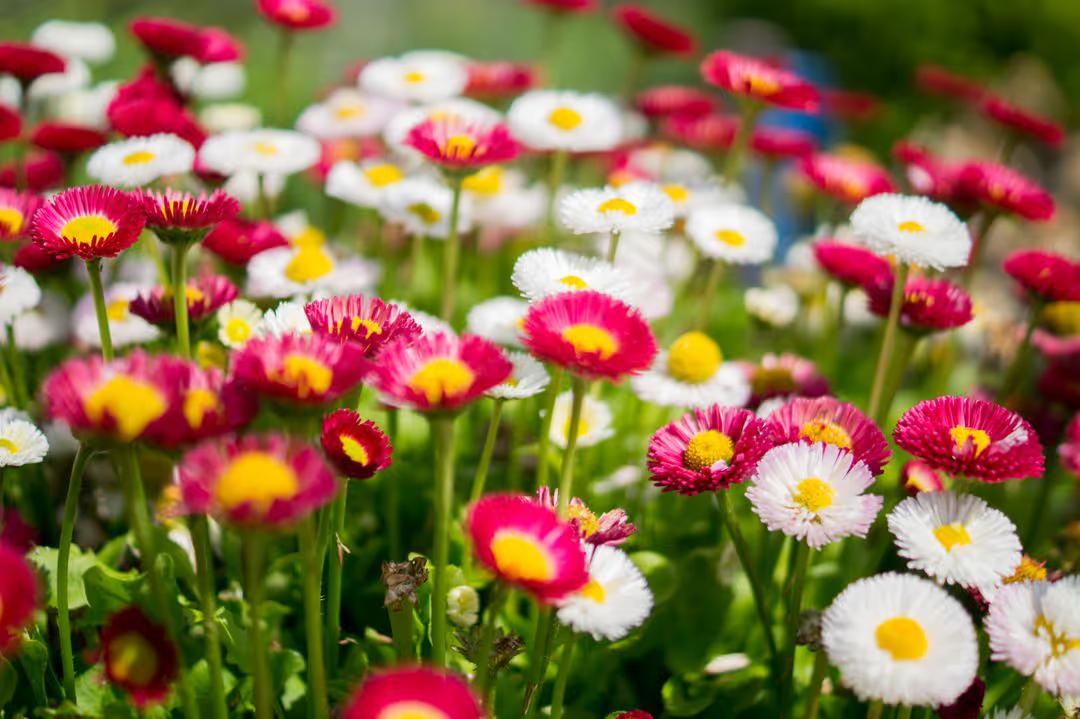What is Minimalism?
Minimalism is a design philosophy that emerged in the mid-20th century and is characterised by a focus on simplicity, clean lines, and the use of limited elements while designing. It evolved as a response to the extravagance and complexity of preceding movements like Abstract Expressionism and Postmodernism. At its core, minimalism aims to strike a balance between functionality, aesthetics, and spatial arrangement. It prioritises essential elements while eliminating anything unnecessary, resulting in a visual language that is both elegant and purposeful.

Minimalism in Art
At its heart, minimalism is founded upon the principle of simplicity, with a focus on eliminating all but the essential elements in both art and design. In the realm of art, minimalism is typified by its use of simple, geometric forms and the absence of superfluous ornamentation or decoration. In architecture, minimalism prioritises clean lines, basic shapes, and a focus on functionality, intending to create designs that are both aesthetically pleasing and highly efficient. Beyond design, minimalism extends to a broader lifestyle philosophy, encouraging individuals to simplify their lives by eliminating unnecessary possessions and daily routines and instead focusing on the things that truly matter.
Characteristics of Minimalism
Minimalism is an artistic movement and style characterised by simplicity, clarity, and economy of form. This style utilises basic geometric shapes, clean lines, and a limited colour palette. Minimalist art and architecture are often monochromatic or feature a limited range of colours.
In minimalist architecture, buildings are designed to be functional, and construction materials play an essential role in the aesthetics of the building. The use of natural materials such as concrete, glass, and steel is common in minimalist buildings, creating a seamless integration with the surrounding environment.
Similarly, minimalist interiors embrace the same principles, featuring uncluttered spaces that emphasise the use of natural materials such as wood and stone. The furniture is often simple, functional, and devoid of excessive ornamentation, allowing the space to speak for itself.

Minimalism and Its Power
The design philosophy of minimalism is rooted in the idea of reducing the design to its fundamental elements. It focuses on the functional and aesthetic qualities of the design, resulting in a sense of clarity and simplicity amidst the complexity of the modern world. In an era where information overload is the norm, minimalism can provide a refreshing and calming approach to design. By streamlining the visual language, minimalist design can bring out the message or product more compellingly and effectively.
An excellent case study to demonstrate the power of minimalism in design is the tech giant Apple. The company's renowned products feature an unmistakable clean, simple design that embodies the minimalist aesthetic. Apple's design philosophy is all about achieving simplicity through elegance and function, making it an integral part of the company's brand identity. The minimalist approach has helped Apple establish itself as one of the most acclaimed brands in the world, with its products and designs widely recognised and celebrated.

Table of contents:
- ● What is Minimalism?
- ● Minimalism in Art
- ● Characteristics of Minimalism
- ● Minimalism and Its Power
- ● Mixing Colour & Minimalism
- ● Colour Scheme for Minimalists
- ● How to Design Minimally
- ● Contrast
- ● Organisation
- ● Dominant Visuals
- ● Typography
- ● Real Life Examples of Colourful Minimalism
- ● How to Incorporate Colourful Minimalism in Graphic Design?
- ● Choose a Limited Colour Palette
- ● Use Colour to Create Contrast and Hierarchy
- ● Use Negative Space Effectively
- ● Focus on the Essentials
Mixing Colour & Minimalism
Minimalism and colour are not mutually exclusive concepts but rather complementary elements that can be seamlessly integrated to create a unique and personalised style. While it may be tempting to associate minimalism with a lack of personality or vibrancy, the reality is that this design philosophy can be just as colourful and expressive as any other.
In fact, one of the most remarkable aspects of minimalism is its ability to provide structure and organisation to our physical and mental spaces. By decluttering our homes and reducing our material possessions, we can gain clarity and focus in our lives, freeing ourselves from the pressures of consumerism and excess.
However, to fully embrace minimalism, it is important to approach it with a balanced and individualised perspective. While there may be specific rules or guidelines to follow, it is ultimately up to us to find a style and aesthetic that suits our unique personalities and preferences.
Whether it is revamping our wardrobes or redecorating our living spaces, we must consider the end result and ensure that our choices reflect our values and desires. This may mean letting go of sentimental objects or stepping out of our comfort zones to try new things, but ultimately, the goal is to create a sense of synchronisation and balance in our lives.
In the realm of colour, minimalism offers endless possibilities for creativity and self-expression. While some may opt for a monochromatic palette, others may choose to incorporate bold and vibrant hues into their minimalist designs. The aim is to find what works for us and to use colour as a means of enhancing our surroundings and reflecting our personalities.
But perhaps most importantly, minimalism encourages us to approach our belongings and possessions with a sense of mindfulness and intentionality. Instead of mindlessly consuming and accumulating more things, we are challenged to consider the value and purpose of each item we own and to let go of whatever no longer serves us.
In doing so, we can create a more meaningful and fulfilling life that is aligned with our values and priorities. Whether we choose to embrace minimalism as a full-time lifestyle or simply incorporate its principles into our daily routines, there is no denying the power and transformative potential of this philosophy. So let us embrace minimalism with an open mind and heart and discover the beauty and joy that comes with living a simpler, more intentional life.
Colour Scheme for Minimalists
When discussing the role of colour in minimalist design, some may argue that black and white should not be considered as colours at all but rather shades on the edges of a spectrum. However, this viewpoint is not shared by all. In fact, minimalists believe that black and white are just as much colours as any other hue on the colour wheel. In reality, black and white are the most extreme shades of red and blue, respectively.

Even though black and white are often the primary colours used in minimalist design, there are still a plethora of other colour options that can be implemented. One easy method to do so is by using a monochromatic colour palette. However, there are certainly more interesting ways to add colour to a minimalist design.
For example, one could choose to incorporate colours that reflect the season. This does not mean you need to change every item in your home or wardrobe four times a year, but rather that you can reuse items in versatile ways. Minimalism is all about flexibility, so it is easy to swap out or repurpose items without overproducing or creating excess waste.
If seasonal colours are not your thing, consider selecting one bold and one more subdued colour scheme to mix and match. This will provide a versatile range of options to work with. For those who want a pop of colour without going overboard, consider adding statement pieces like colourful sunglasses or a multi-coloured poster to an otherwise minimalist outfit or living space.
Ultimately, the possibilities for incorporating colour into minimalist design are endless. By embracing a minimalist lifestyle, you can not only reduce your environmental impact but also cultivate a unique style that reflects your personality and values.
How to Design Minimally
Designing with purpose is a fundamental principle of minimalist design, where every element, colour, and font has a reason for inclusion. Starting with a clear goal in mind is critical, as it ensures that the design's purpose is well-defined and understood by those who interact with it. This may require discarding common design elements in favour of a return to the basics of contrast, space, organisation, colour, dominant visual, and typography.
Incorporating the ratio in design can further enhance the visual appeal and functionality of your work. By applying the Golden ratio in design, you can achieve aesthetically pleasing layouts that naturally guide the viewer's eye and improve the overall user experience.
Contrast
A key aspect of minimalist design is contrast and the use of black and white schemes is popular as they innately contain a lot of contrast. However, any high-level contrast works, such as pairing elements with opposing forces or using stark design with an elaborate typeface. Space is equally essential, and while massive amounts of white space are not necessary, element breathability is crucial. Each design element should have enough room to stand on its own in the design, and minimal outlines seldom feel cramped.
Organisation
One of the essentials in minimalist design is organisation, and using a grid is highly recommended. Going back to the roots of minimalism and the use of lines and rectangles can be beneficial. Even the lines visible in a design impact how users perceive it, and a grid will help to keep the design organised and harmonious. Colour plays a crucial role in creating contrast, but many designers overuse colour in minimalist design. Streamlining the colour palette to a single hue in a light and/or dark framework is preferable.
Dominant Visuals
Incorporating dominant visual elements is critical in minimalist design, and designers should focus on selecting one element to make it dominant. Dominance links directly to contrast, using techniques in concert to create impact. An image, block of text, or an element with surprising colour are all excellent suggestions for dominant visuals.
Typography
When it comes to typography, it is equally crucial, and sans serif is a common usage in most minimalist frameworks. A typeface with clean lines and simple strokes is preferable, and bold or thin typefaces can be used depending on the message the designer wants to convey. If typography is the dominant element, a typeface with more flourish or personality can create contrast.
Thus, designing with purpose is critical in minimalist design, with every element carefully considered to achieve a specific goal. Using contrast, space, organisation, colour, dominant visual, and typography to their fullest potential ensures that minimalist design is both aesthetically pleasing and functional.

Real Life Examples of Colourful Minimalism
Colourful minimalism is an exciting design approach that combines the simplicity and elegance of minimalism with bold and vibrant colours. It is a great way to add visual interest and personality to a minimalist design while maintaining a clean and uncluttered look. This section will explore real-life examples of how designers and brands have successfully incorporated colourful minimalism into their projects, from logos and websites to interior design and fashion. Through these examples, we will see how the creative use of colour can make a minimalist design truly stand out and leave a lasting impression on its audience.
Branding: Colourful minimalism in branding is a powerful tool for creating a lasting impression. By pairing a simple, minimalist design with bold and unexpected colours, brands can communicate their message in a memorable and impactful way.
Dropbox's branding serves as a testament to the power of minimalism in creating a bold, colourful, and impactful visual identity. The tech company's logo, a simple blue box, has become synonymous with its brand, thanks to its bright and bold colours that render it instantly recognisable. In 2017, Dropbox underwent a significant brand overhaul that featured contrasting colours, a revamped signature font, and a new logo design, which was aimed at enhancing its marketing and branding efforts.
The new branding design was intended to infuse a bold and unexpected use of colour pairs, taking inspiration from the creative work of its customers, who use Dropbox's tools to unleash their creativity. This innovative approach to colour and design is emblematic of the company's passion for creating tools that encourage creativity and collaboration. Moreover, the redesigned logo featured a flatter, simpler design of the same standard box, which served to retain the company's established brand equity while also reflecting its evolving design philosophy and setting it apart from its competitors.
Web Design: Colourful minimalism in web design can create a clean, modern look that is both visually appealing and easy to navigate. By using bold colours in a simple layout, it can help to draw attention to important elements and create a memorable user experience.
The digital publication The Outline employs the strategy of colourful minimalism to achieve a captivating design for its website. The site predominantly features a black-and-white scheme, but the use of vibrant hues on the typography and accents injects life and vitality into the overall presentation. The well-calibrated use of colour imbues a sense of dynamism and impact while still maintaining a simple and sleek aesthetic. The Outline is a versatile media company that curates a range of content including articles, podcasts, and videos. The website design is intentionally streamlined and user-friendly, allowing visitors to easily focus on the content. The selection of colours is strategic, as the bright hues serve to emphasise crucial information and enhance the visual appeal of the site. Overall, The Outline's website serves as a noteworthy example of the potential of colour and minimalism to create a visually engaging design.
Packaging: Colourful minimalism can be a powerful tool in packaging design as it creates a visually striking and memorable product. By using a limited colour palette and minimalistic design, brands can convey a sense of sophistication and elegance in their packaging.
The packaging design of Glossier's skincare brand is a prime example of colourful minimalism that combines simplicity with visual appeal. The brand's packaging follows a clean and basic approach, with a limited yet impactful colour palette consisting of shades of pink and white. The bright, bold use of pink in packaging sets Glossier's products apart, giving them an eye-catching appeal. Glossier, a direct-to-consumer beauty brand, has a reputation for selling everyday cosmetics and skincare products, and its packaging design follows the same minimalistic and fun style with a focus on natural colours and minimal text. Glossier's packaging design is customizable, offering customers the opportunity to choose the colours and designs of their products. Glossier's packaging has become so popular that it has spawned a devoted online following among makeup and skincare enthusiasts. Glossier's packaging design serves as an excellent example of how minimalism and colour can be used effectively to create a visually appealing design that resonates with customers.
Posters: Colourful minimalism can be used to create striking posters that grab people's attention. The use of bright colours against a simple, clean background can create a powerful and memorable visual impact.
The Coachella music festival employs the principles of colourful minimalism to create a visually compelling atmosphere that evokes vivacity and enthusiasm. Despite their minimalistic nature, the posters' vibrancy and dynamism are eye-catching and attention-grabbing, thanks to the use of bright, vivid colours. The festival's creative team meticulously designs the posters to make them visually engaging and unforgettable. They blend various design elements, such as typography, graphics, and photography, into their posters, focusing on bold designs and striking hues. As a result, the posters have become cherished keepsakes for enthusiasts who collect them as a memento. The Coachella posters are an excellent example of how the combination of minimalism and vibrant colours can produce impactful and memorable designs.
Product Design: Colourful minimalism in product design aims to simplify the design by using only essential elements and bold colours. It emphasises a functional approach to design while ensuring that the product stands out with its bright and dynamic colour palette.
The iPhone stands as a quintessential example of colourful minimalism in product design. The device's simplistic and streamlined design, characterised by clean lines and a restrained colour palette, is a hallmark of Apple's design philosophy which prioritises functionality and unobtrusiveness. The design of the iPhone is deliberately intuitive, focusing on optimising the user experience, making it an iconic product that is easily recognisable. In a subtle, yet impactful manner, the use of bright and bold colours for the cases and accessories of the device enables users to express their unique individuality and personalise their devices. Through its utilisation of colourful minimalism, Apple has created an enduring and iconic product that speaks to the company's design philosophy of simplifying design and putting the user at the forefront of the product experience.
How to Incorporate Colourful Minimalism in Graphic Design?
Effective graphic design revolves around the concept of visual communication, and a powerful method of creating designs that leave an impression is by employing the use of colourful minimalism. This design style combines the simplicity of minimalism with the boldness of bright colours, resulting in a visually striking and memorable design. This section will explore the principles and techniques of colourful minimalism and how to incorporate them into your graphic design projects. From choosing a limited colour palette to effectively using negative space, we will provide tips and guidelines for creating beautiful and impactful designs with colourful minimalism. Here are four tips to effectively incorporate colourful minimalism into your design projects.
Choose a Limited Colour Palette
A deliberate selection of a limited colour palette is essential in order to maintain a sense of simplicity and prevent overwhelming the viewer. It is imperative to choose a small number of colours that harmonise seamlessly and consistently employ them throughout the design. For instance, observe the discerning employment of red and white in Coca-Cola's branding, illustrating a timeless and instantly recognizable design.
Use Colour to Create Contrast and Hierarchy
Colourful minimalism possesses the potential to establish a lucid visual hierarchy within the design, accomplished by leveraging colour differentiations among various elements, such as headlines, subheadings, and body text. Vibrant, striking colours can be judiciously employed for crucial components, while more subdued hues can be allocated to less prominent elements. Witness how Airbnb astutely employs a bright red colour to create captivating contrast and direct attention to the prominent "Book" button.
Use Negative Space Effectively
Negative space assumes a pivotal role in minimalist design and can be effectively employed in the realm of colourful minimalism to cultivate equilibrium and clarity. Purposefully utilising negative space around design elements enables the creation of a distinct visual hierarchy, guiding the viewer's gaze towards pivotal facets of the design. Take note of the website design for Tom Dixon, where negative space is employed judiciously to fashion a pristine, minimalist layout that facilitates effortless navigation.
Focus on the Essentials
Within the realm of colourful minimalism, it is paramount to prioritise the essentials and eliminate extraneous elements from the design. By simplifying the layout and omitting superfluous decorative elements that serve no inherent purpose, a design that is unequivocal and impactful can be forged, offering viewers ease of comprehension. Observe how the design for Apple's AirPods employs a refined, streamlined approach with minimal decorative elements, resulting in a timeless and minimalist design paragon.
In conclusion, colourful minimalism is a design approach that combines the simplicity and clarity of minimalism with the visual impact of bright and bold colours. By using a limited colour palette, creating contrast and hierarchy with colour, using negative space effectively, choosing simple typography, and focusing on the essentials, designers can create visually striking and memorable designs that are easy to understand and engage with. From product design to posters, packaging to websites, colourful minimalism can be applied to a wide range of design disciplines to create impactful and effective design solutions. As design trends continue to evolve, colourful minimalism is sure to remain a popular approach that inspires and captivates designers and viewers alike.

Rahul Shevde


